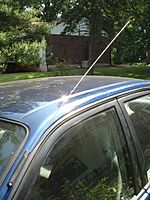Antenna facts for kids
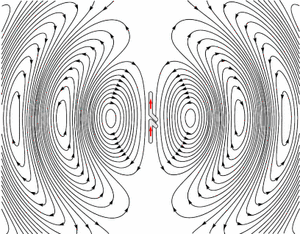
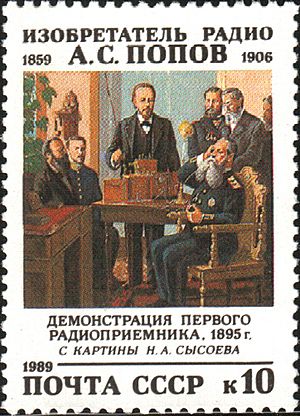
An antenna or aerial is a special metal device. It helps send or receive radio waves. Think of radio waves as invisible signals that carry information. Many electronic gadgets use antennas. These include radios, televisions, radar systems, wireless LAN (Wi-Fi), cell phones, and GPS devices. Antennas work both in the air and in outer space.
The word "antenna" comes from Guglielmo Marconi's experiments in 1895. He was testing wireless equipment. For his test, he used a 2.5-meter-long pole. He called it ' l'antenna centrale ' in Italian, which means 'the central antenna'. Soon, the word 'antenna' became popular. It now means the device we know today. You can say "antennas" or "antennae" for the plural.
Contents
How Antennas Work
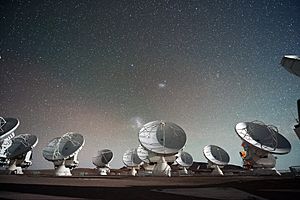
Antennas are super important for any radio device. They connect the electrical parts of a radio to the invisible electromagnetic waves in the air. These waves are what we call radio waves. They carry signals through the air or space. They travel at the speed of light and hardly lose any signal strength.
Sending and Receiving Signals
When an antenna sends a signal, it changes electrical energy into radio waves. When it receives a signal, it does the opposite. It changes radio waves back into electrical energy. This electrical energy then goes to your radio or TV.
Antenna Size and Frequency
Each antenna is designed for a specific range of frequencies. Think of frequency as how fast the radio waves wiggle. The size or length of an antenna usually depends on the wavelength it uses. Wavelength is related to frequency. Longer waves need bigger antennas.
Types of Antennas
Different antennas have different jobs. Some antennas send signals in all directions. Others focus the signal in one specific direction.
Omnidirectional Antennas
- Omnidirectional antennas send signals roughly equally in all directions.
- A common example is a whip antenna, like the one on your car radio. It sends signals all around the car.
- A perfect omnidirectional antenna isn't possible, but some come very close.
Directional Antennas
- Directional antennas focus their energy more in one direction.
- This is useful when you want to send a strong signal to a specific place.
- They also work better for receiving signals from a particular direction.
- For example, Satellite television dishes are directional. They point right at the satellite.
Common Directional Antennas
- A horn antenna is used when a very strong, focused signal is needed. They work well for short wavelengths.
- Dish antennas are often used for satellite TV and radio telescopes. They collect weak signals from far away.
- A Yagi antenna (like the old TV antennas on roofs) has several parts. Only one part is connected to the TV. The other parts help focus the signal. This makes it very good at picking up signals from one direction.
Dipole and Monopole Antennas
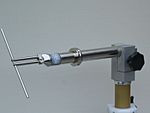
- A dipole antenna is very basic. It's just two wires. One end of each wire connects to the radio. The other ends are free. It sends signals in most directions, but not straight off the ends of the wires.
- A monopole antenna is like half of a dipole. It uses the ground (or a metal surface) as the other half. Car antennas are often monopoles.
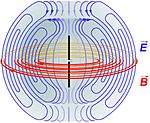
Antenna Gain
When we talk about "antenna gain," it means how much an antenna can focus its power. It doesn't mean the antenna creates more power. Instead, it takes the power it gets and directs it more strongly in a specific direction. This makes the signal stronger where you want it, but weaker in other directions.
Phased Array Antennas
A phased array is a group of two or more simple antennas. They are connected together. By changing how the signals reach each antenna, you can steer the direction of the radio waves. This is like pointing a flashlight beam without physically moving the flashlight.
Antenna Connections
- The antenna lead-in or feed line is the cable that connects the antenna to your radio or TV.
- An antenna coupling network helps the antenna connect perfectly to the radio. This makes sure the signal travels smoothly without losing power.
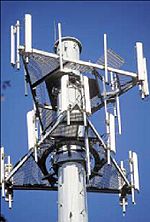
|
See also
 In Spanish: Antenna para niños
In Spanish: Antenna para niños


